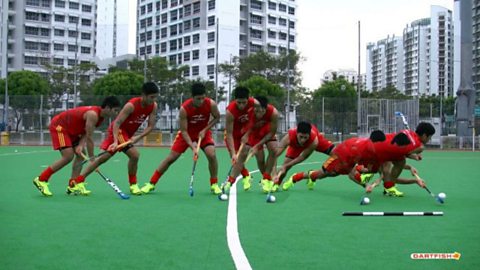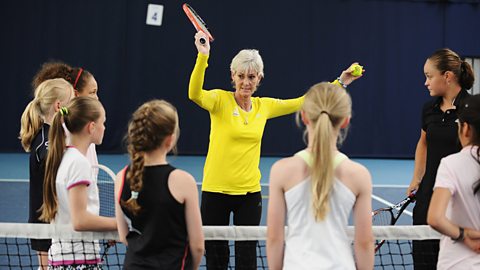Visual guidance
Visual guidance is when a performer can see the skill being performed or practised. For example:
- demonstration – sometimes by the coach or another performer, usually highlighting certain aspects that are important
- image – a photo, diagram or drawing of the skill
- video – either an example of the skill being performed or a recording of the performer's own performance
- observation – of a game or another performer
Visual guidance can show the skill as a whole movement, broken down into steps or applied within a real situation.
In the modern era, many coaches and performers have learned to use technology to provide visual guidance – before, during or after practice and performance. See Observing and analysing performance.
This type of guidance helps learners who are at the early stages of learning and have never seen or experienced the skill before and skilled performers who need to refine specific elements.
Julius Yego, the 2015 Javelin World Champion from Kenya, learnt to throw the javelin by watching videos online.

Many sporting institutions use visual guidance technology to support athletes. This type of software breaks down complex skills into a series of static moments. Athletes can record and play back their best performances to see when skills were being performed most effectively. In addition, it can allow them to overlay two performances and compare them. They can compare their own performances or compare themselves to an opponent.
